They look wonderful, but can become a danger, especially for children and animals. From angel’s trumpet to cyclamen and monkshood – a selection of the most poisonous beauties of the plant world.
Opulent blossoms, beguiling fragrance, intense colors – the plant world has many dramatic beauties to offer. But as decorative as they may be, many of them are true poison dwarfs. You should treat these plants with caution and keep them away from children and pets in particular.
Monkshood (Aconitum napellus).
Goat’s death, strangling, Venus’s chariot, wolf’s weed – aconite has received many names over time, some of which already hint at its toxicity. In fact, aconite is the most poisonous plant in Europe. Originally, it is found in forested mountainous regions, wet meadows and stream banks. But now the 1.5-meter-high perennial with dark purple or blue flowers can also be found in many ornamental gardens. In fact, all parts of the plant are poisonous. Just touching the flowers, leaves, stems or roots causes the contact poison aconitine to cause a painful rash, followed by convulsions cardiac arrhythmias, respiratory paralysis and heart failure. The lethal dose of acontinin for an adult human is 1.5 to 5 mg. It is said that even the Roman emperor Claudius was poisoned with aconite.

Laburnum anagyroides (Golden Rain)
One look at the yellow-glowing, drooping flower clusters is enough to understand the name of this plant: Laburnum is an extremely decorative little tree that has been cultivated as an ornamental plant for centuries. Both in gardens and parks laburnum is well represented and it is easy to get lost in its sight. While all parts of the plant are poisonous, it is the fruits that give laburnum a particularly bittersweet aura: visually they resemble small pea pods and contain a high dose of the poisonous alkaloids cytisine, laburnine, laburamine and N-methylcytisine. Children in particular should be kept away from this poisonous plant. The consumption of three to five pods can already be fatal. The other parts of the plant are also poisonous and can lead to death by respiratory paralysis in addition to vomiting, stomach cramps and fever.
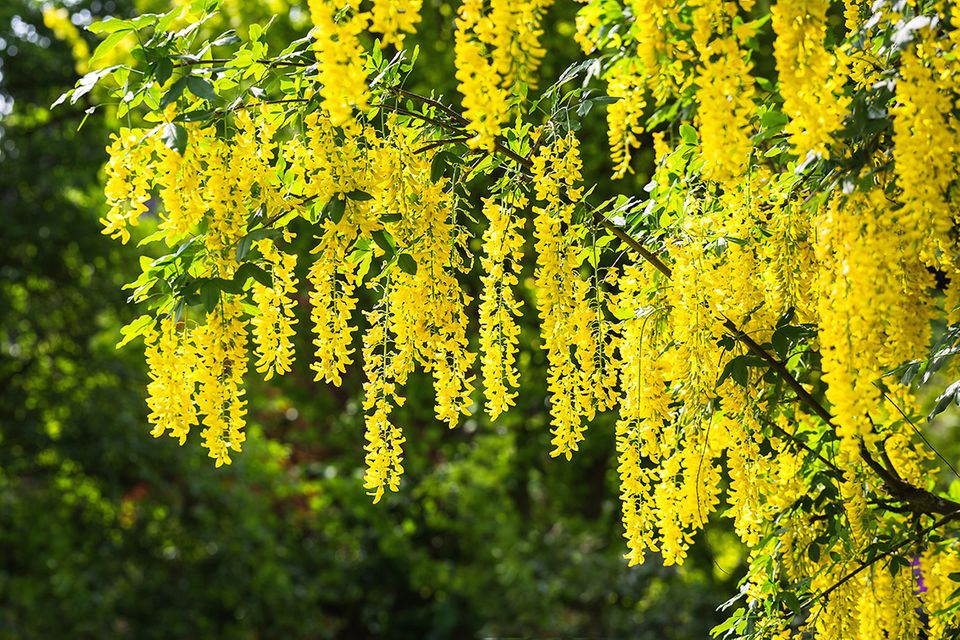
Lily of the Valley (Convallaria majalis)
The lily of the valley is one of the best known poisonous plants in Europe. The robust early bloomers with the beautiful white flowers grow preferentially in deciduous and mixed forests, gladly in direct neighborhood with the wild garlic, whose leaves visually resemble those of the lily of the valley. However, confusion of the two plants is not without: due to various poisons contained, the consumption of lily of the valley can cause dizziness, visual disturbances and convulsions. In the worst case, the poison attacks the heart and leads to cardiac arrhythmia and heart failure.
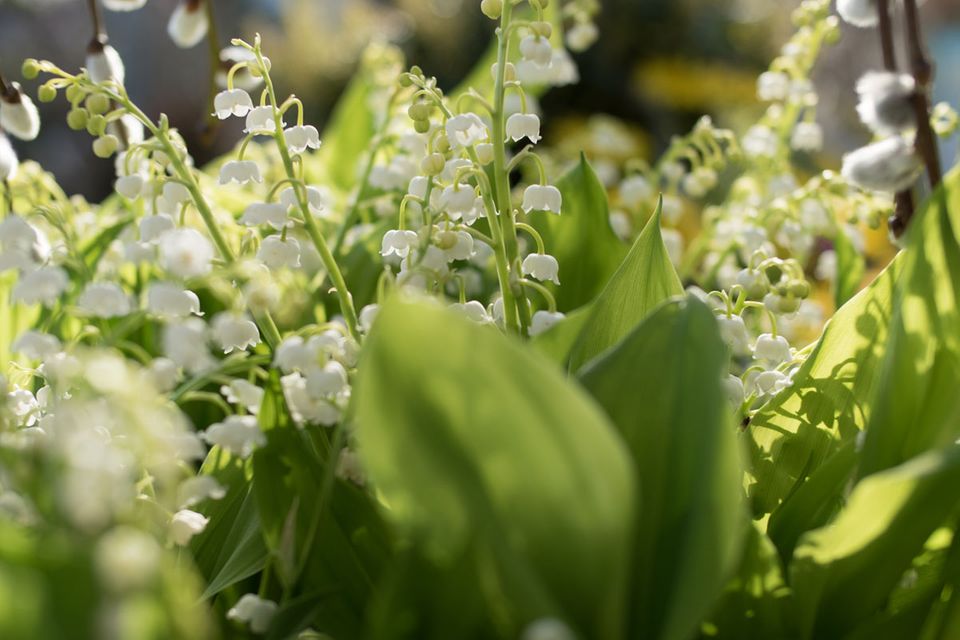
Spindle tree (Euonymus europaea)
If you roam the woods in May or June, you might have noticed this native poisonous plant. The intense orange-red, four-lobed flower capsules of the spindle tree are a real eye-catcher. When fully ripe, they pop open to release their seeds to the environment. Unfortunately, it is precisely these colorful, interestingly shaped fruits that can quickly end up in children’s mouths and lead to serious poisoning. The other parts of the plant also contain large amounts of alkaloids such as evonine, which – and this is the insidious thing – only cause the first symptoms after about 15 hours. Vomiting, diarrhea, stomach cramps and cardiac arrhythmias are the result. Fortunately, it takes a comparatively large amount of fruit (about 30 to 40 pieces) before the poisoning leads to death.
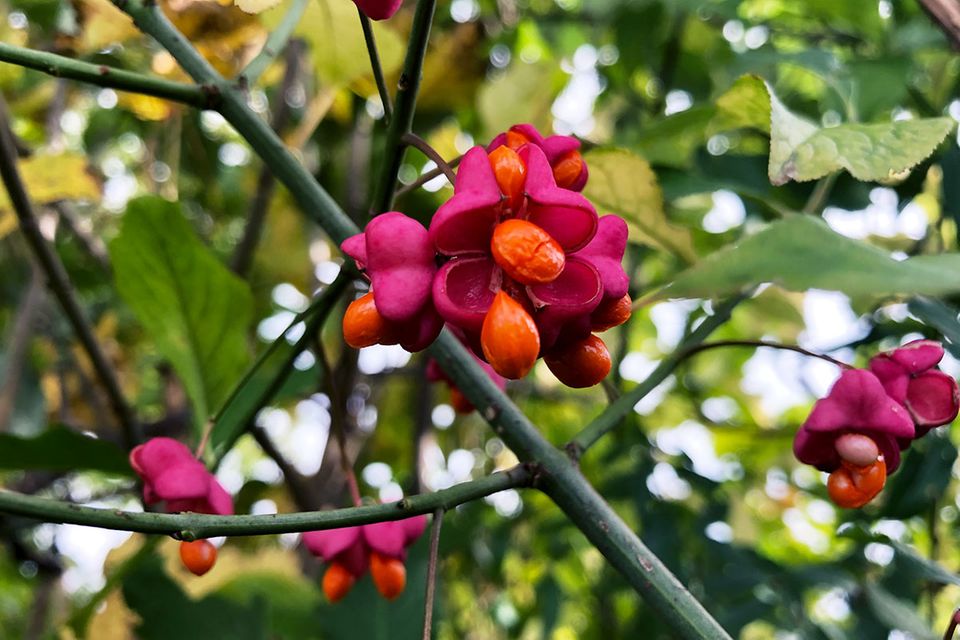
Hydrangea (Hydrangea)
In recent years, many hydrangea owners have experienced strange incidents in their gardens: overnight, ugly gaps suddenly appear in the magnificent perennials, and large quantities of flowers have been removed. It sounds like a bad joke, but police authorities are increasingly reporting hydrangea thefts in European front gardens. Presumably, the flowers are dried and then consumed as intoxicants. Young people in particular hope for an intoxicating effect similar to that of cannabis. However, these “natural drugs” are by no means harmless: the leaves and flowers of the hydrangea contain hydrocyanic acid compounds that are released when burned. The inhaled smoke can cause dizziness, anxiety, unconsciousness or even cardiac arrest within a few minutes. Other highly dangerous plants such as belladonna, angel’s trumpet and datura are also abused as natural drugs and cause, among other things, nerve damage, psychosis and delusions.
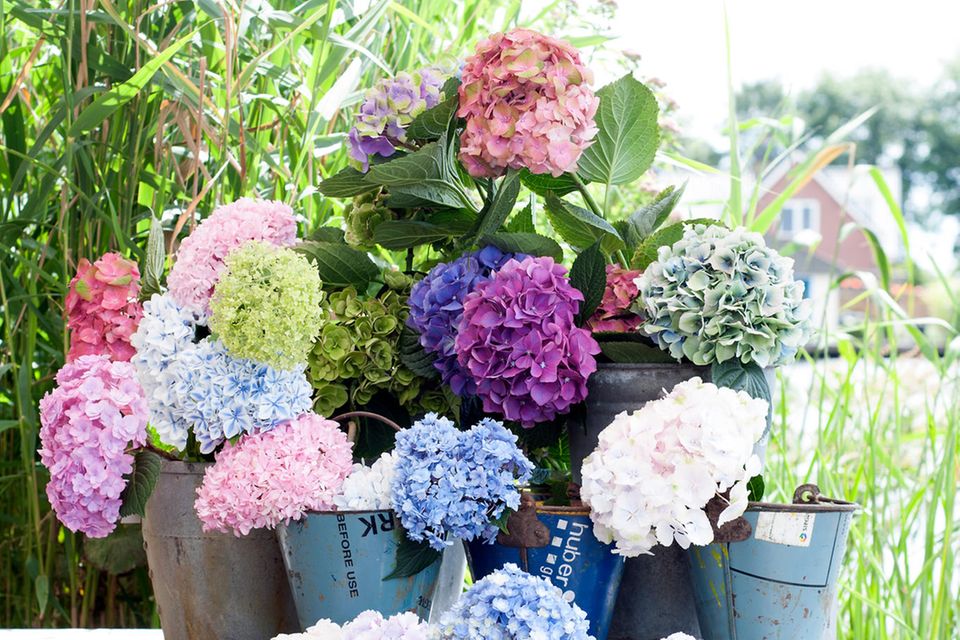
Angel’s trumpet (Brugmansia hybrids).
The funnel-shaped flowers, up to 30 centimeters in size, are the distinguishing feature of the beautiful angel’s trumpet, which is one of the most popular potted plants. However, similar to datura and belladonna, this poisonous plant serves as a substitute for hallucinogenic drugs for some people. Eating the flowers as well as smoking other parts of the plant can cause feelings of happiness and hallucinations. Even small amounts have fatal consequences for children. Typical symptoms of angel’s trumpet poisoning include restlessness, vomiting, diarrhea, dry mucous membranes, hoarseness, impaired vision, high pulse, and convulsions.
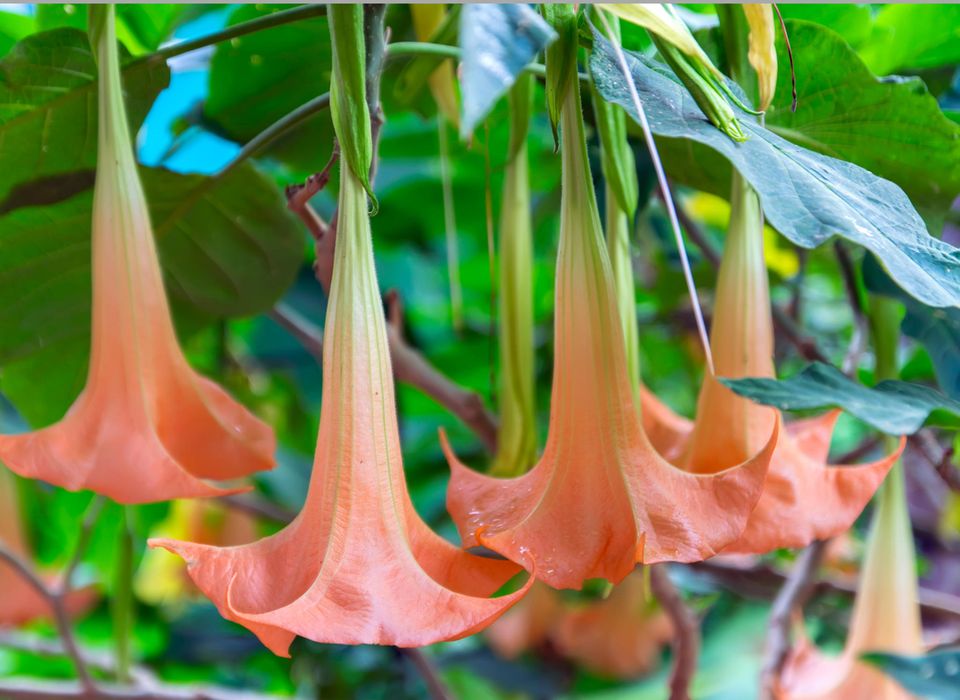
Delphinium (Delphinium)
All plant parts of this impressive garden perennial are very poisonous. Especially the seeds contain toxic alkaloids similar to aconitine of aconite. While mere skin contact usually has no effects or can cause skin irritation in sensitive people, poisoning through consumption is often accompanied by symptoms such as tingling or burning in the mouth and throat, numbness of the tongue and limbs, vomiting, sweating, diarrhea as well as respiratory paralysis. The garden larkspur and the high larkspur are particularly poisonous. Children and animals in particular should therefore be kept away from delphinium.
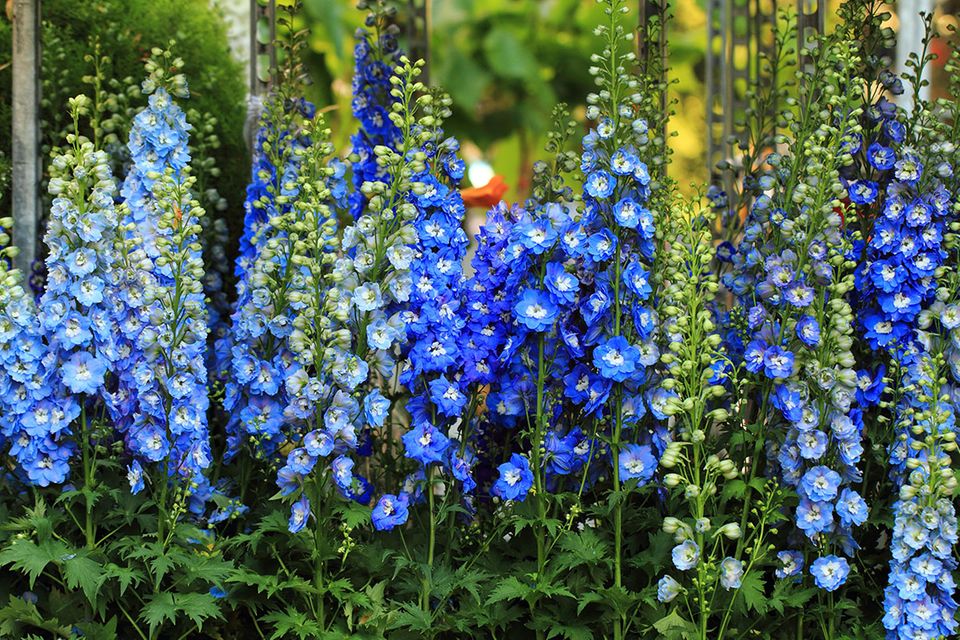
Autumn crocus (Colchicum autumnale)
This small bulbous flower, which fascinates us from August onwards with its pink and violet blossoms, has such unpleasant nicknames in European usage as “corpse flower”, “poison crocus” or “devil’s bread” for good reason. All plant parts of the autumn crocus contain the poison colchicine, which resembles arsenic and is toxic even in small quantities. Due to its visual similarity to wild garlic, there is always confusion between the two plants in the spring. Within a few hours, the first symptoms of poisoning appear in the form of difficulty swallowing and a burning sensation in the throat and pharynx, followed by vomiting, stomach cramps, severe diarrhea, falling blood pressure and paralysis of the respiratory tract.
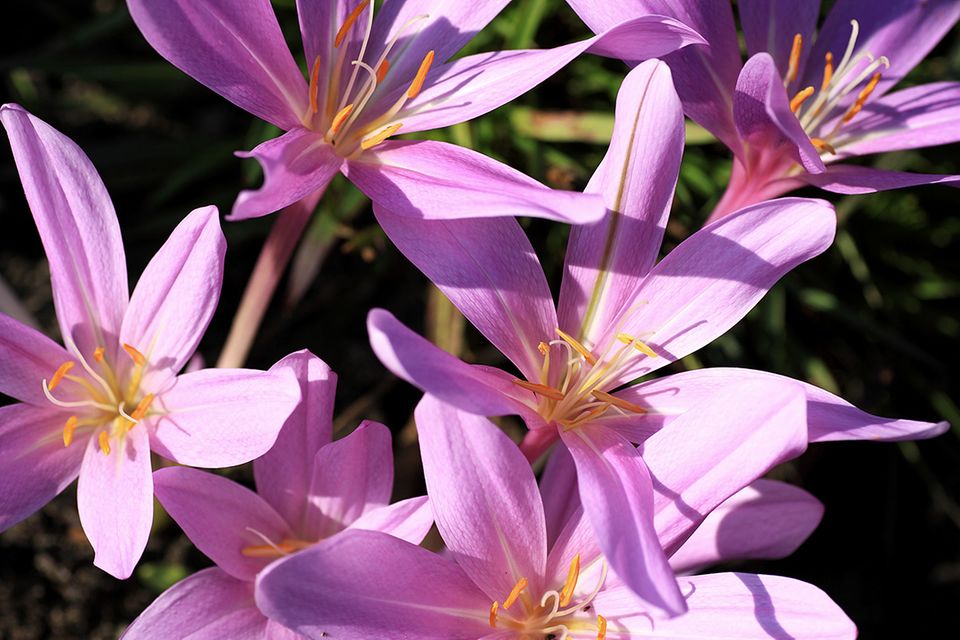
Lupine (Lupinus)
The beautiful butterfly flowers of the lupine are arranged in tight clusters or spikes and shine in purple, pink, white, red or yellow, depending on the variety. Among them, there are numerous lupine species that contain toxic bitter compounds. Among the poisonous and most widespread species is especially the “old”, blue or yellow flowering species Lupinus polyphyllos. The dangerous toxins are located in the seeds as well as in the herbaceous leaves, the consumption of which can lead to a whole range of poisoning symptoms: From heart palpitations and dizziness, confusion and nausea to trembling and restlessness to shortness of breath and cardiac arrest, poisoning manifests itself very differently depending on the plant variety.
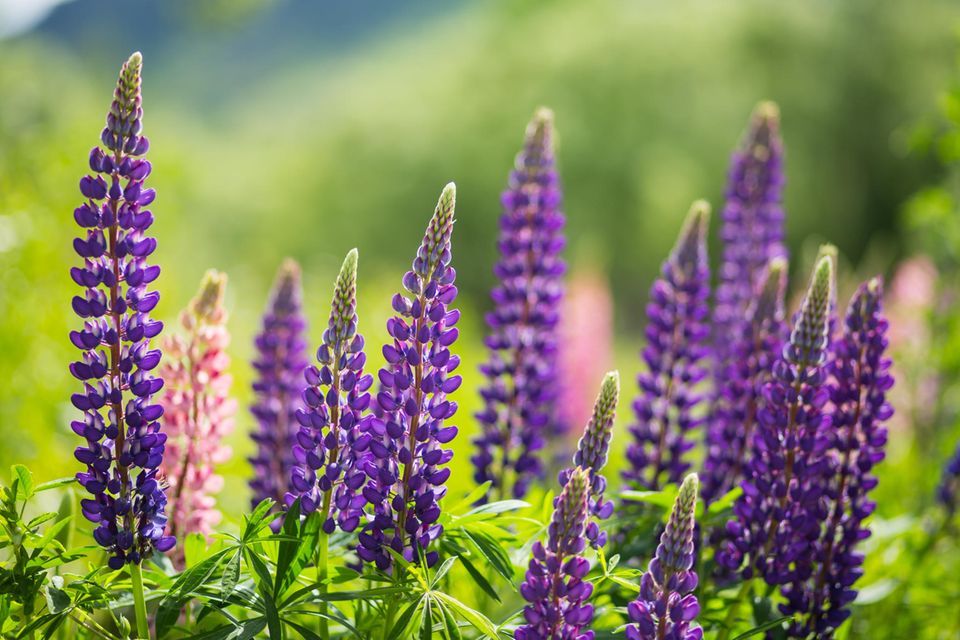
Rhododendron (Rhododendron anthopogon).
In its native Asia, this plant is popularly used as a medicine for muscle and joint pain, but rhododendron can also do other things: all parts of the plant, i.e. leaves, flowers, shoots, fruits and even nectar and pollen are poisonous. Grayanotoxin, the name of the poison, causes abdominal pain, nausea and diarrhea in humans. Cardiac arrhythmias and convulsions are also among the symptoms of poisoning.

Blue Vine (Wisteria)
The sight of the hanging blue flowers of the wisteria is romantic. Too bad that, like the laburnum, it develops pods and seeds in late summer that are particularly dangerous. Although all parts of this plant contain alkaloids that cause severe poisoning when eaten, the pods are the most toxic. In addition to severe headaches, stomach cramps, diarrhea and dilated pupils, nausea, vomiting and circulatory problems are also typical symptoms of poisoning.
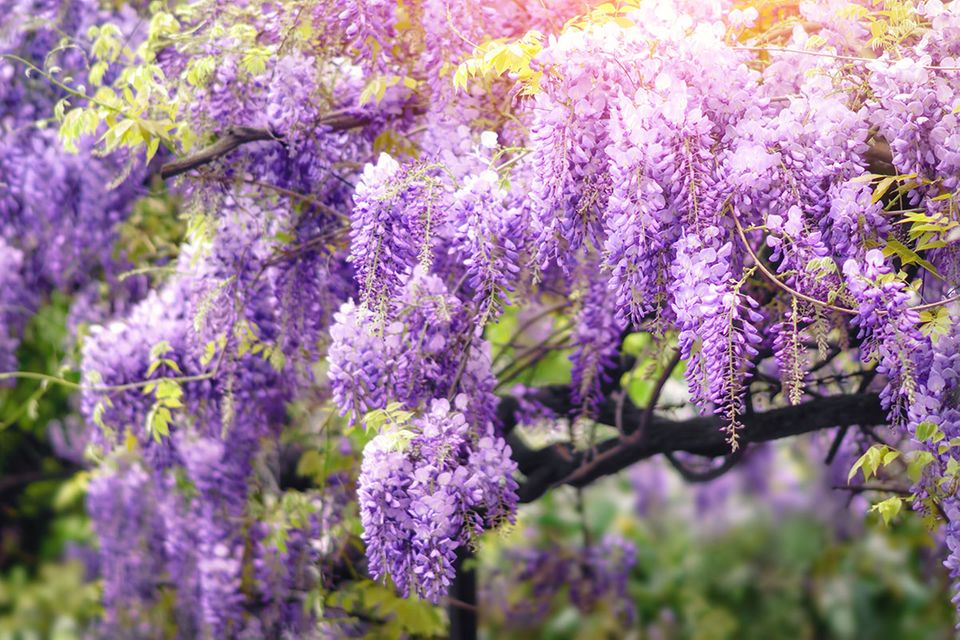
Christmas rose (Helleborus niger)
The pretty Christmas rose blooms through the Christmas season and into February, which is why it is also known as the “snow rose” or “Christmas rose.” In addition to the white-flowered Christmas roses, there are also bolder flower colors, but as beautiful as it may be – Christian charity is not its thing: Its poisonous cocktail of protoanemonin, sterodide saponins and bufadienolides causes diarrhea, malaise, vomiting and dilated pupils up to collapse.
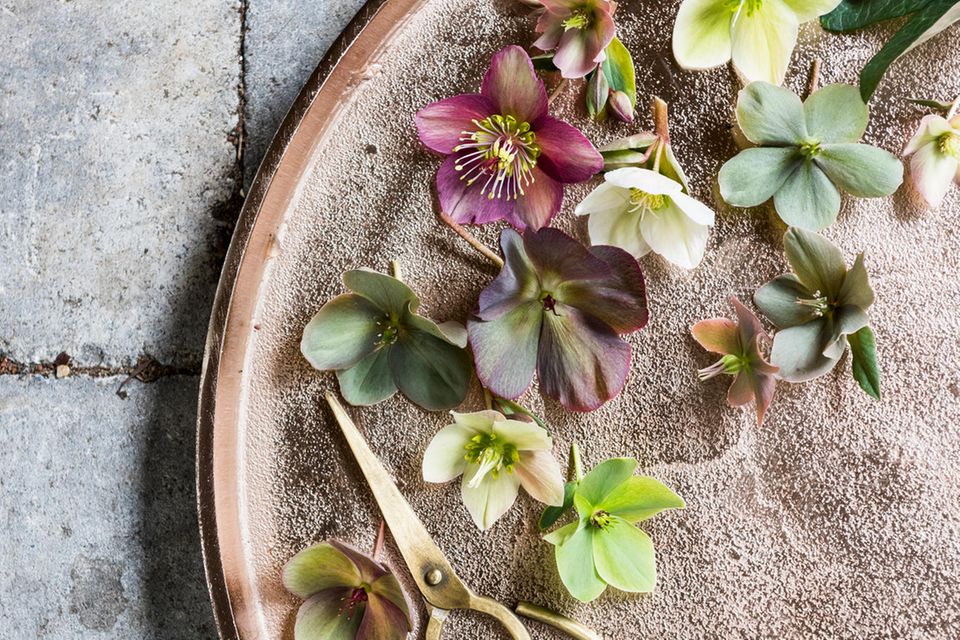
Red Foxglove (Digitalis purpurea)
When its bell-shaped flowers slowly open, the red foxglove is a charming eye-catcher. But appearances are deceptive, because this plant is highly toxic. Depending on the time of year and day, the concentration of various toxins in red foxglove varies, including digitoxin, gitaloxin and gitoxin. Even accidental consumption of small amounts can lead to fatal poisoning, which also earned this plant the title of “Poisonous Plant of the Year” in 2007.
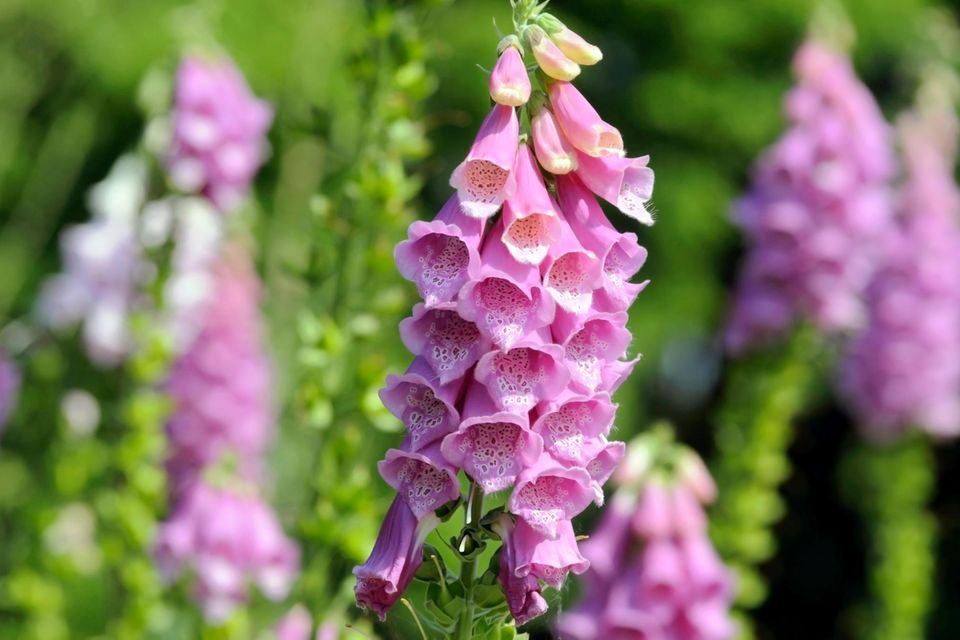
Cyclamen (Cyclamen purpurascens)
With its pink, elegantly inclined flowers, the cyclamen looks wonderfully innocent – but this is deceptive: this poisonous plant is toxic from the bulb to the flower tips and causes numerous symptoms of poisoning. The cyclamine it contains, which is particularly potent in the tuber and leaves, can cause cramps, dizziness, stomach pain, diarrhea, nausea, paralysis and, in the worst case, death.
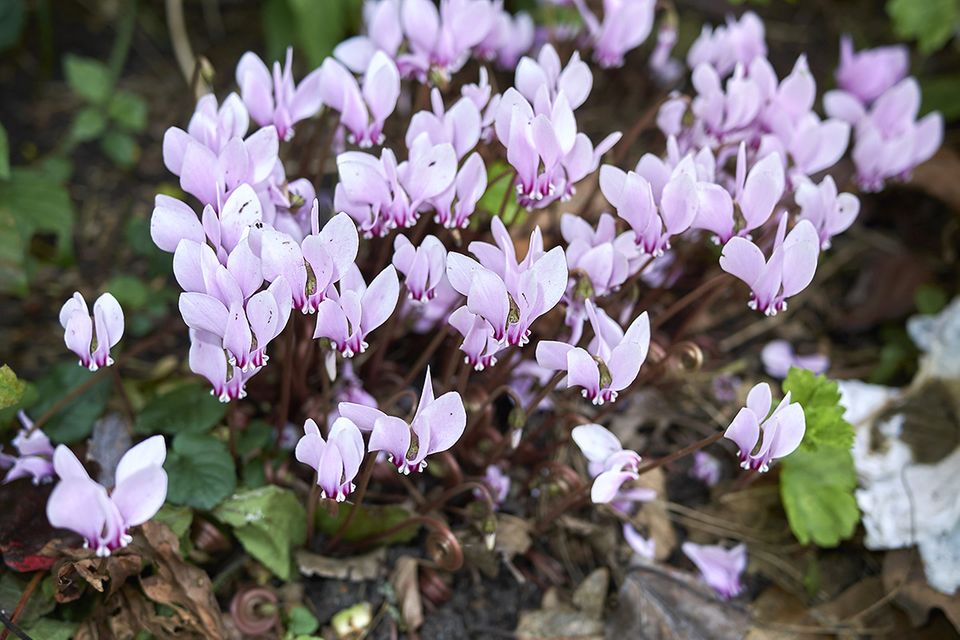
Oleander (Nerium oleander)
This flowering shrub is one of the oldest Mediterranean potted plants and should not be underestimated despite its lush blooms: All plant parts of the dog poisonous plant contain oleandrin, which can cause death in higher quantities. Skin contact with the sap of the poisonous plant causes itching and reddened as well as irritated skin. Ingestion of plant parts inevitably leads to headaches, general gastrointestinal complaints, cramps, dilated pupils or even cardiac arrhythmia with fatal outcome.
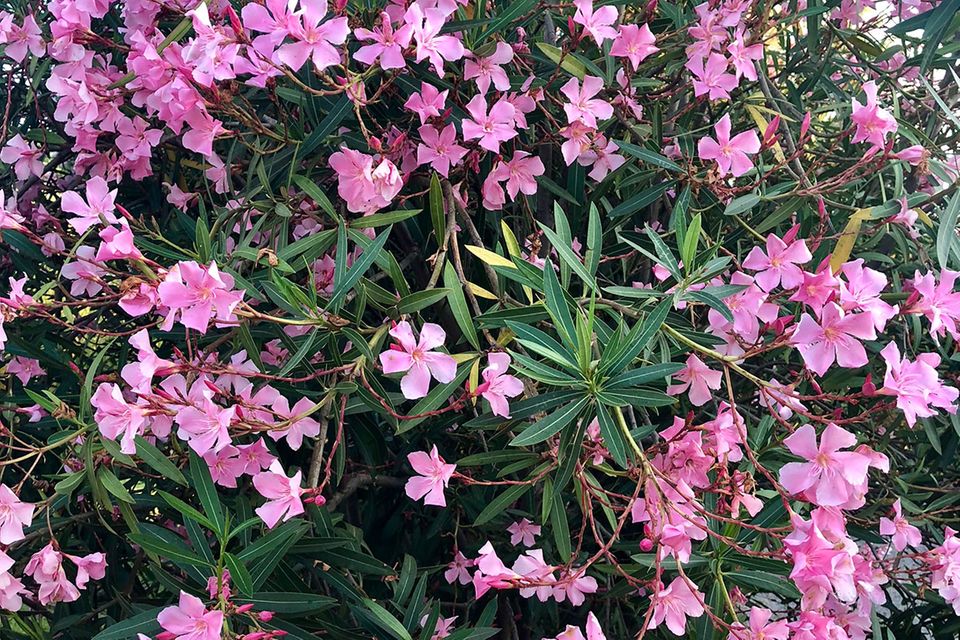
What to do in an emergency in case of poisoning?
If you suspect poisoning, you should immediately call the experts at the poison information centers.

